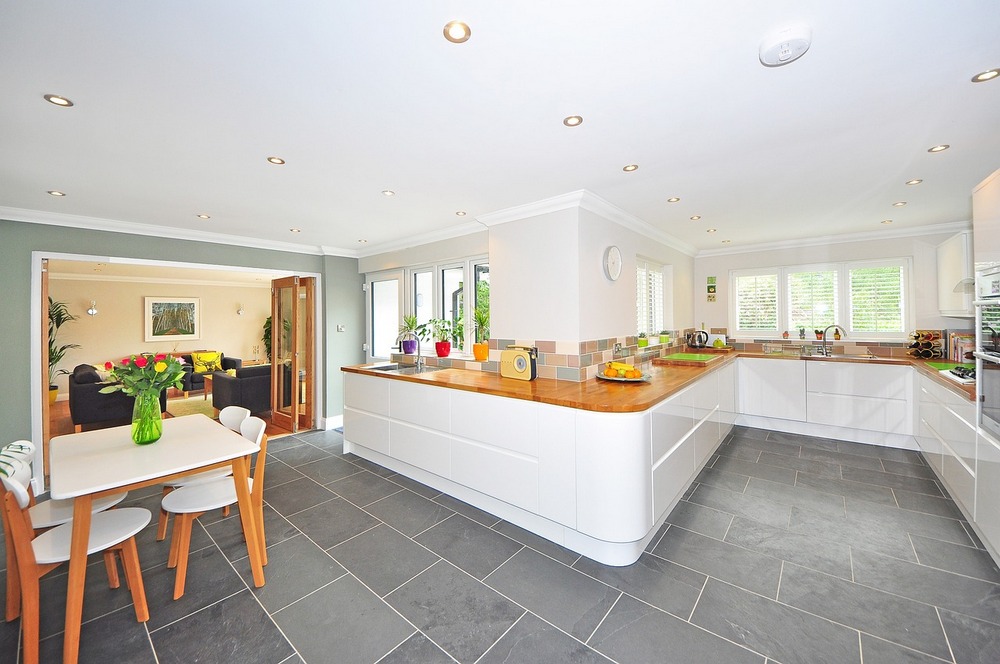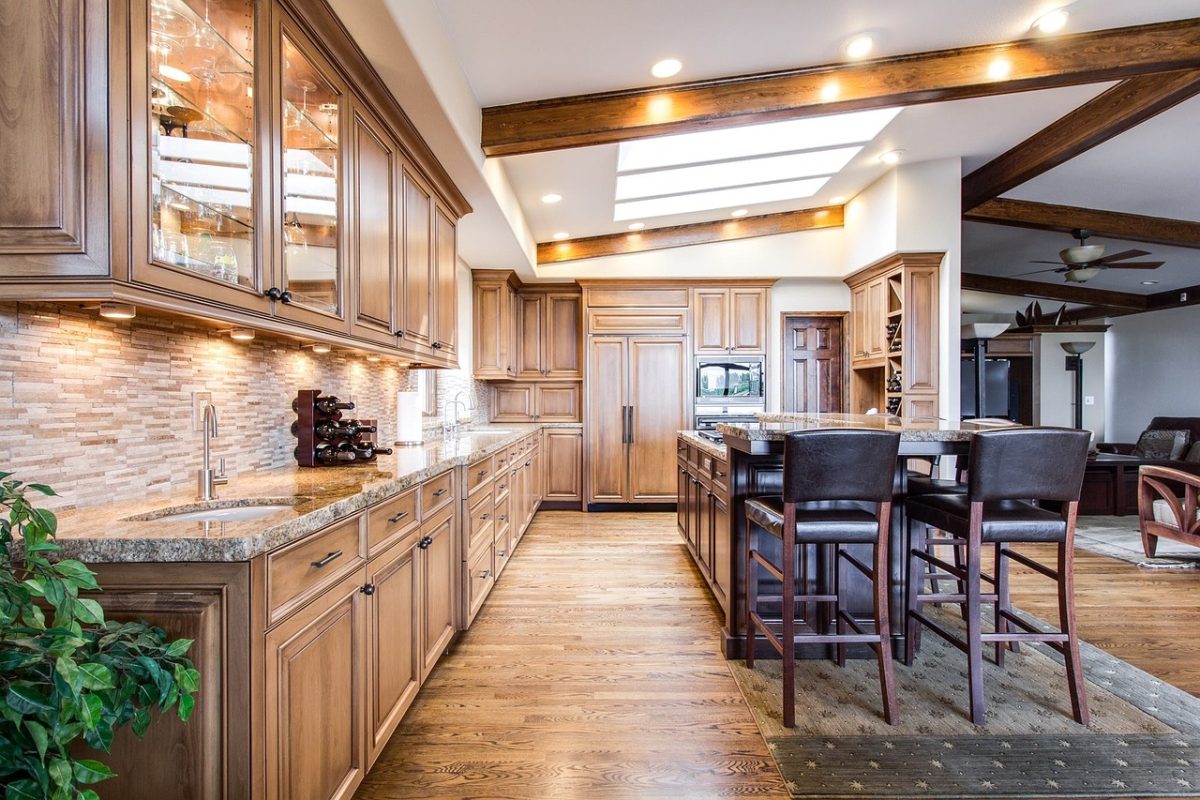Last Updated on October 24, 2025 by teamobn
The kitchen is one of the most frequented places in a home, and many homeowners may opt for a remodeling project to keep this space current and functional.
Kitchen remodeling can be a significant expense for many homeowners. However, it is also an investment that could last for many years and can even increase your home’s overall value.
If you’re looking for more renovation ideas to increase your home’s value, this guide offers practical tips that go beyond just the kitchen:
Contents
- 1 Costly Kitchen Mistakes: What to Avoid During Your Remodel
- 1.1 Not Creating a Budget
- 1.2 Not Having a Plan
- 1.3 Inefficient Lighting Choices
- 1.4 Neglecting Kitchen Inventory Assessment
- 1.5 Not Considering Storage
- 1.6 Not Selecting the Appropriate Flooring
- 1.7 Making Impromptu Changes
- 1.8 Not Considering Future Needs
- 1.9 Not Following the Installation Order
- 1.10 Performing DIY Kitchen Remodels
- 2 Endnote
Costly Kitchen Mistakes: What to Avoid During Your Remodel
Before embarking on your kitchen remodeling journey, it’s important to consider a few factors to avoid some common errors. In this article, we will explore some common kitchen remodeling mistakes you can avoid:
Not Creating a Budget
Creating a budget is the first thing that every homeowner must do. Choose the most important features of the kitchen, such as a kitchen island, layered lighting, better drawer or cabinet space, and a designated food pantry, then assign your finances accordingly.
While working, always monitor your budget to ensure you remain on track with your kitchen remodeling tasks. For a clearer picture of how remodeling costs compare to potential home value gains, check out this guide on kitchen remodel cost vs value.
Not Having a Plan
The biggest mistake a homeowner can make during a kitchen remodel is poor planning. To be successful in a kitchen remodel, you must have a vision and an end goal. This also involves analyzing whether the final product is going to serve the needs of you and your family.
You must be as realistic as possible during the planning process. Before you begin buying equipment and breaking down walls, ensure you are satisfied with what you’ll accomplish within your current budget and space. Factor in maintenance as well, especially if you have small children.
Inefficient Lighting Choices
Ensure that lights are strategically placed in the right places, ensuring you have enough light while working. If you want an intimate setting, you can install dimmers. However, note that working in the kitchen in the shadows can result in accidents.
Lights are best positioned slightly in front of your workspace. Ensure they utilize bulbs that provide good lighting for cutting and chopping. Additionally, consider placing natural lights such as glass doors, skylights, and windows. Natural lights increase your visibility in the kitchen and create an airy and bright atmosphere that adds to a positive mood.
Neglecting Kitchen Inventory Assessment
A detailed kitchen inventory gives you insight into what you want from your kitchen remodel. Inventory questions such as the current traffic of your kitchen, the most used appliances, and how to make the floor plan more efficient are crucial to your overall goal. The better you accomplish your inventory task, the better you can prioritize the remodels that you use the most.
Not Considering Storage
Kitchens require storage, so make sure you have a space for storing everything you frequently use and unused space for items you intend to buy. If you are not planning for a walk-in pantry beside your kitchen, then consider a room for cooking tools, supplies, and food.
Poor kitchen remodels don’t consider storage, leaving homeowners with few cabinets or open shelving. Planning for this ensures you have enough space for the most common tools and goods and your small appliances.
Not Selecting the Appropriate Flooring
If you intend to use hardwood floors for your new kitchen, wood selection is essential. Prefinished sealed hardwoods are good choices. However, hardwood can be slippery, while reclaimed, distressed, or hand-scraped wood offers more traction and covers damage from kitchen tear and wear.
The kitchen is the most accident-prone place in any home. When choosing your new flooring, you must protect areas where slips are more likely to occur. You can consider placing pads or rugs in front of your sink, fridge, pantry, and dishwasher when working.
Making Impromptu Changes
Another crucial mistake homeowners make when remodeling their kitchen is making impromptu changes. After a project has begun, it is better not to include new ideas or exclude some ideas. Making these impromptu changes when renovating your kitchen can cost you a lot of money.
It can also suspend your work while you and the designer begin searching for a way to circumvent the changes. This will result in delays in your remodeling projects as you might need to reschedule labor or find new materials.
Not Considering Future Needs
Poor planning for a kitchen remodeling project can result in challenges, especially when related to growing families. For example, not considering the need for more storage space, a functional layout, or a larger dining area capable of accommodating more individuals can lead to an inefficient and overcrowded kitchen when the family expands.
Disregarding accessibility features like wider pathways, lowered cabinets, and adjustable countertops can also make it hard for older adults to use and navigate the kitchen safely and comfortably. Poor planning might cause you to commit to another remodel sooner than is required.
Not Following the Installation Order
Installation order is crucial when remodeling your kitchen, especially when it comes to installing cabinets and floors. Excerpts recommend installing cabinets followed by the flooring if possible. For example, when a cabinet is installed on top of a hardwood floor, the floor will lose its ability to contract and expand, making cupping a reality.
It can also make it difficult to remove the floor without causing harm to the cabinets if you require it to be repaired or replaced. Installing the flooring after the cabinets reduces the risk of the floors getting damaged from installing the cabinets.
Performing DIY Kitchen Remodels
Many people, in a bid to save money, often want to perform their kitchen remodels themselves. Even if you intend to save money, consult with a professional before you begin your renovation. What you can do by yourself will be based on your experience.
However, it is crucial to first get advice from an expert. There are certain things you shouldn’t do on your own unless you have the right skills. Avoiding working with professionals can cost you more money in the long run.
Endnote
During a kitchen remodeling project, many homeowners can easily overlook crucial details that can cause serious issues down the line. Careful planning and considering your long-term goals are essential, especially if you view home improvements as part of a larger investment strategy.
For those interested in seeing how remodeling fits into a bigger picture, this 4-step process for new real estate investors offers practical guidance for making informed decisions and maximizing returns.






